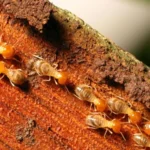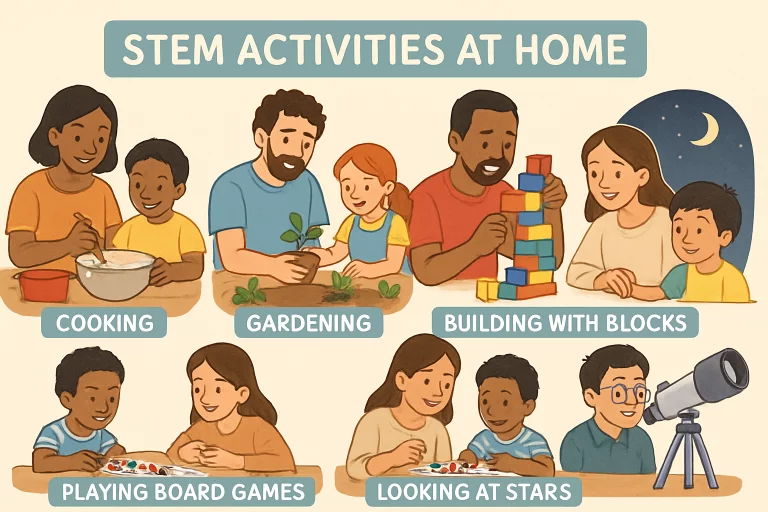Mixing math and STEM into your child’s daily life not only supports their academic success but also ignites a lifelong passion for innovation and exploration. The activities below were designed with hands-on learning at their core, encouraging critical thinking and creativity right in your home or backyard. From the kitchen counter to the stars above, these experiences show that meaningful learning doesn’t require expensive tools or rigid lesson plans—just a willingness to explore and have fun together.
Discovering new ways to nurture your child’s curiosity can be as simple as reimagining everyday activities. By infusing math and STEM (Science, Technology, Engineering, and Mathematics) concepts into daily home routines, parents create powerful learning opportunities that feel fun and natural rather than forced. Whether your child is helping to measure flour for cookies or spending the evening spotting constellations, turning ordinary routines into engaging educational moments helps build essential skills for the future. One of the most interactive and enjoyable ways to reinforce these subjects is to learn math with board games, transforming family game night into a playful, collaborative atmosphere that strengthens math fluency and problem-solving skills.
Cooking Up Math Skills
The kitchen is a dynamic math laboratory where children can learn about concepts like units of measurement, fractions, ratios, and volume. By introducing simple tasks like measuring ingredients, children can learn about fractions, division, and reasoning. For older children, they can modify recipes for different servings, scale up batches for events, or estimate total costs. Using a stopwatch to track each step can also spark discussions about elapsed time and multi-step processes. These activities help children see how math is woven into everyday living and enjoy the delicious results.
Gardening and Science Exploration
Gardening offers a wealth of opportunities for young scientists to experience biology, ecology, and environmental science right outside their door. Begin with a simple project, such as planting seeds in small pots or garden beds, and encourage your child to observe the process from seed to sprout. As plants emerge and grow, children learn about plant anatomy, photosynthesis, soil composition, and how sunlight, rain, and temperature affect growth. Foster curiosity by having them maintain a nature journal: recording daily observations, measuring and graphing plant heights, counting leaves, and noting changes over time. Discuss concepts like the water cycle, decomposition, and pollination, making connections between what they see and the broader world around them. By nurturing living things, kids naturally develop responsibility, careful observation, and an understanding of the interconnectedness of life—all fundamental to scientific thinking.
Building and Engineering at Home
Engineering doesn’t require a fancy robotics kit—everyday materials like blocks, cardboard, and recyclables are all you need to introduce basic engineering concepts. Challenge children to create structures such as towers, bridges, or ramps, and propose questions: “How tall can you build your tower before it falls?” “Which type of material makes the strongest bridge?” Invite your child to draw blueprints before building, honing spatial reasoning and planning skills. Throughout the process, trial and error naturally lead to explorations of balance, gravity, force, and structural integrity. Encourage kids to modify their designs, observe outcomes, and reflect on what worked or didn’t, instilling resilience and an experimental mindset. You’ll be amazed by both the creativity that emerges and the fundamental engineering skills developed through simple, open-ended play.
Tech-Free Coding Games
Coding and computer logic might seem advanced, but their foundations can be taught without screens or computers. “Unplugged” coding games make programming accessible and engaging at any age. For example, use colored cards or objects to represent commands such as “move forward” or “turn right,” setting up a grid on the floor for your child to navigate by “programming” a sequence of moves to reach a target object. Board games that involve sequencing, pattern recognition, and logic also hone important coding competencies, promoting collaboration and strategic thinking. These types of activities develop essential computational thinking and logic early on, laying the groundwork for more complex coding skills later.
DIY Science Projects
Science becomes most exciting when children have the freedom to hypothesize, test, and discover. Classic chemistry experiments—like volcanic explosions made from baking soda and vinegar—vividly illustrate chemical reactions and unleash a sense of wonder. Create a simple electrical circuit with batteries, wires, and a light bulb to demonstrate the flow of energy and introduce rudimentary engineering concepts. Weather projects, such as tracking rainfall or recording temperature changes over several days, reveal how scientific tools help us observe and interpret our environment. Encourage kids to create a homemade model of the solar system, learning about scale, or build an anemometer to measure wind speed. Each project fosters curiosity, critical observation, and hands-on problem-solving—the true heart of scientific inquiry.
Stargazing and Astronomy Nights
Few experiences ignite a sense of wonder like lying under the stars and marveling at the night sky. Turn a family evening into a mini astronomy lesson by using a stargazing app or a traditional star chart to identify constellations, planets, and even passing satellites. Observe the changing phases of the moon together, and discuss why these changes occur. Spark curiosity by explaining why stars twinkle, how constellations got their names, or why the planets move differently from stars. For added engagement, encourage your child to keep a stargazing journal, sketch what they observe, and track events like meteor showers or lunar eclipses. These activities bolster spatial reasoning, broaden children’s view of the universe, and foster a lifelong love of science and exploration.
Math in Grocery Shopping
Grocery trips are packed with math moments just waiting to be uncovered. Bring your child along and make them your “math assistant” by having them estimate totals as you shop, compare prices to find the best deal, or figure out the savings during a sale. Challenge them with questions such as, “If we buy three cans of soup at $1.29 each, what’s the total?” Encourage mental math practice by figuring out changes due after paying in cash or calculating the price per ounce for bulk items. Not only do these tasks enhance arithmetic skills, but they also teach children about budgeting, making smart purchasing decisions, and applying mathematical reasoning in everyday life—essential skills for independence and financial literacy.
Storytelling with a Scientific Twist
Integrating storytelling and STEM education in children’s daily routines can foster creative learning and problem-solving skills. By incorporating stories featuring young explorers, inventors, or mathematicians, children can develop a love for science and problem-solving. This playful blend of literature and academics enhances comprehension and vocabulary and encourages imaginative problem-solving. Parents can nurture their child’s critical thinking, curiosity, and love of discovery by making bedtime stories a time for creative science-themed adventures. Family-friendly resources like math-based board games and interactive educational projects can also be explored to inspire math and STEM learning at home further.
READ ALSO: Creative Ways to Support Music Education in Your Community











